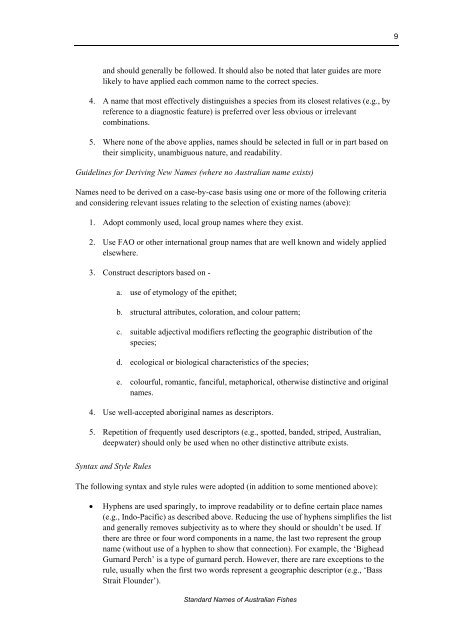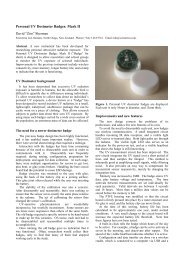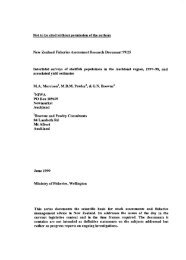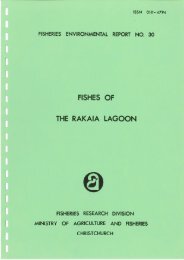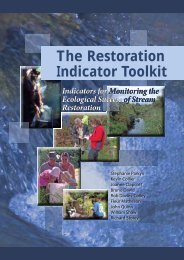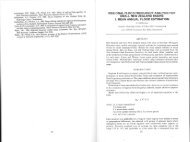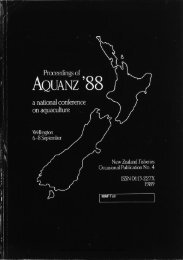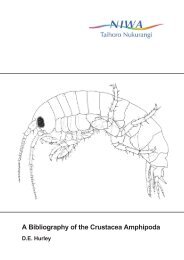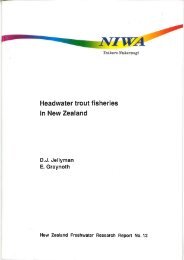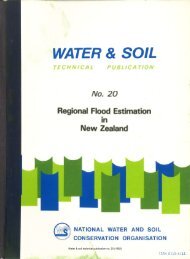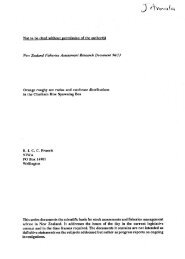australian - These are not the droids you are looking for.
australian - These are not the droids you are looking for.
australian - These are not the droids you are looking for.
You also want an ePaper? Increase the reach of your titles
YUMPU automatically turns print PDFs into web optimized ePapers that Google loves.
9<br />
and should generally be followed. It should also be <strong>not</strong>ed that later guides <strong>are</strong> more<br />
likely to have applied each common name to <strong>the</strong> correct species.<br />
4. A name that most effectively distinguishes a species from its closest relatives (e.g., by<br />
reference to a diagnostic feature) is preferred over less obvious or irrelevant<br />
combinations.<br />
5. Where none of <strong>the</strong> above applies, names should be selected in full or in part based on<br />
<strong>the</strong>ir simplicity, unambiguous nature, and readability.<br />
Guidelines <strong>for</strong> Deriving New Names (where no Australian name exists)<br />
Names need to be derived on a case-by-case basis using one or more of <strong>the</strong> following criteria<br />
and considering relevant issues relating to <strong>the</strong> selection of existing names (above):<br />
1. Adopt commonly used, local group names where <strong>the</strong>y exist.<br />
2. Use FAO or o<strong>the</strong>r international group names that <strong>are</strong> well known and widely applied<br />
elsewhere.<br />
3. Construct descriptors based on -<br />
a. use of etymology of <strong>the</strong> epi<strong>the</strong>t;<br />
b. structural attributes, coloration, and colour pattern;<br />
c. suitable adjectival modifiers reflecting <strong>the</strong> geographic distribution of <strong>the</strong><br />
species;<br />
d. ecological or biological characteristics of <strong>the</strong> species;<br />
e. colourful, romantic, fanciful, metaphorical, o<strong>the</strong>rwise distinctive and original<br />
names.<br />
4. Use well-accepted aboriginal names as descriptors.<br />
5. Repetition of frequently used descriptors (e.g., spotted, banded, striped, Australian,<br />
deepwater) should only be used when no o<strong>the</strong>r distinctive attribute exists.<br />
Syntax and Style Rules<br />
The following syntax and style rules were adopted (in addition to some mentioned above):<br />
• Hyphens <strong>are</strong> used sparingly, to improve readability or to define certain place names<br />
(e.g., Indo-Pacific) as described above. Reducing <strong>the</strong> use of hyphens simplifies <strong>the</strong> list<br />
and generally removes subjectivity as to where <strong>the</strong>y should or shouldn’t be used. If<br />
<strong>the</strong>re <strong>are</strong> three or four word components in a name, <strong>the</strong> last two represent <strong>the</strong> group<br />
name (without use of a hyphen to show that connection). For example, <strong>the</strong> ‘Bighead<br />
Gurnard Perch’ is a type of gurnard perch. However, <strong>the</strong>re <strong>are</strong> r<strong>are</strong> exceptions to <strong>the</strong><br />
rule, usually when <strong>the</strong> first two words represent a geographic descriptor (e.g., ‘Bass<br />
Strait Flounder’).<br />
Standard Names of Australian Fishes


